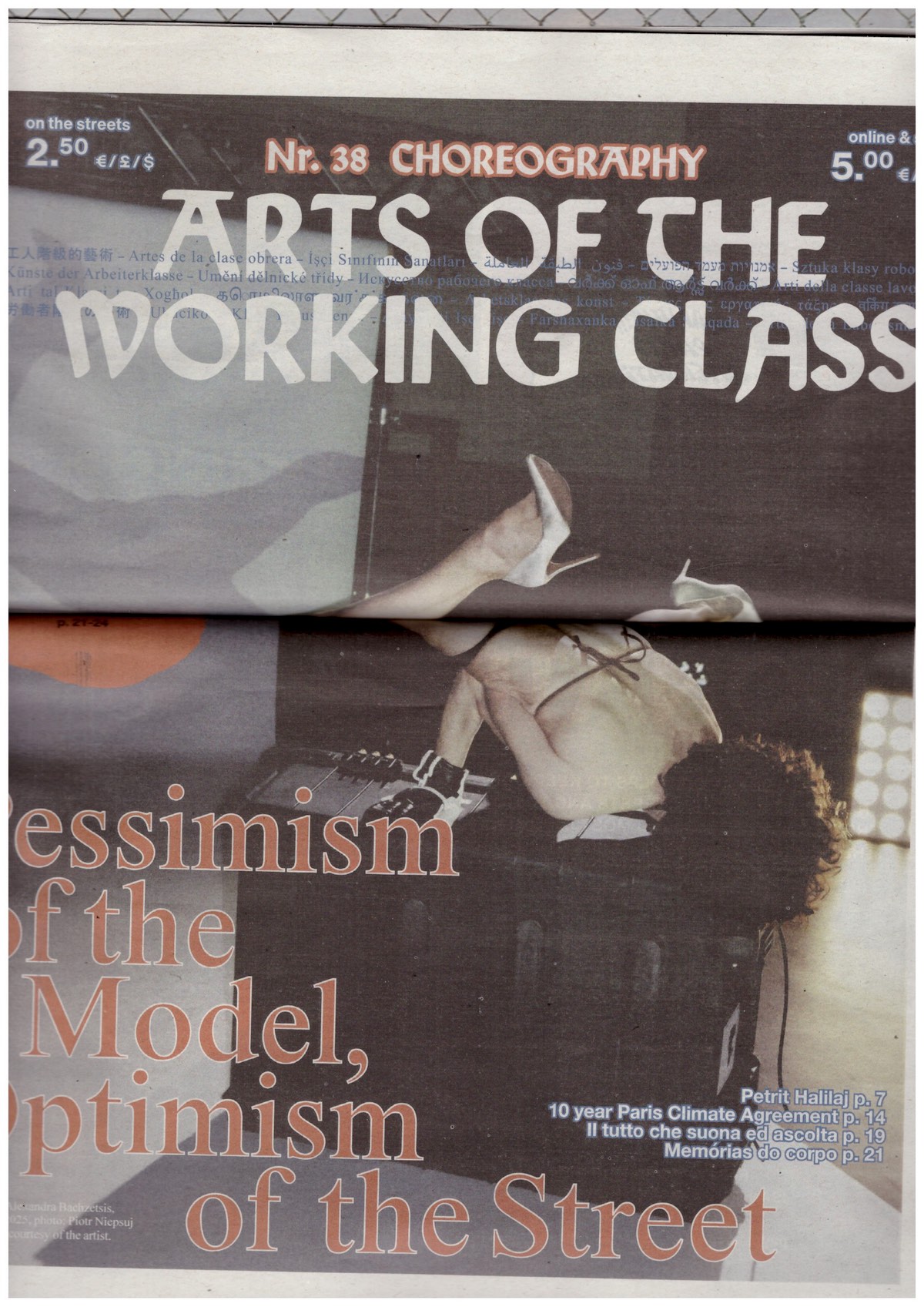MAINI, Dalia (ed.)
Arts of the Working Class #38: Choreography
To move is to think, and to orient our bodies differently is to think otherwise. Since our political leaders put the Books of Laws at the service of the profit of a power-thirsty minority, ideology is now easily choreographed into propaganda. Acknowledging one’s position of dissent as an innate opposition to fascism becomes the first gesture toward opening spaces of possibility. We adapt Antonio Gramsci’s maxim—“pessimism of the intellect, optimism of the will”—into: “the pessimism of the model, the optimism of the street,” invoking forms of collectivity that refuse definition within hegemonic social scores, and of course, modes of redistribution of wealth to which we have remained committed since 2018.
Issue 38: Choreography inquires into how memories, histories, and rituals transform individuals into groups, words into policies, threads into textures, notes into dances, gestures into positions. Today, choreography thrives not only on stage but through social media, where short videos compress movement into consumable poses—endlessly repeated and algorithmically rewarded. Here the body mirrors Mark Fisher’s architecture of capitalist realism: gestures circulate even as they are emptied of meaning, as if there were no alternative but to keep performing. It is a dance of reflexive impotence, where participation feels inevitable and refusal unimaginable.
Homogenizing forces remain powerful. Histories flatten differences. Memories are standardized. Laws enforce conformity. Habits reproduce the same gestures. Power maintains its choreography by repetition, making us forget other ways of moving. In contrast, we turn to particular, historical, and material forms of choreopoetics—their capacity to fracture inevitability, to make meaning in other ways, constellations that meander or pause, strategies that resist capture. The body is the site where we free one another, however briefly, from the script of inevitability.
Artists induce these moments of exception. Alexandra Bachzetsis unsettles the pleasure of belonging, repeating gestures until power reveals itself beneath the skin. Nairy Baghramian’s fractured forms for her upcoming show at WIELS, Nameless, embody precarity as resistance, fragments that refuse the smoothness of a world wherein “there is no alternative”. Petrit Halilaj’s Syrigana assembles opera, folk traditions, and gathers community into a polyphony that disrupts homogenization. Mark Leckey’s turn toward spirituality stages a hauntological choreography, summoning the invisible that capitalism insists cannot return. Adam Fearon’s Parade confronts fragility not as weakness but as a mode of possibility: chains at the point of breaking, gestures poised for release.
Elsewhere, Commonplace gathers us in domestic rituals—ORSHI’s doubt-resolving circles, Afrang Malekian’s convivial meals. The Community Summer School imagines neighborhood knowledge as a collective rehearsal for another future. Specialists from the Amsterdam School of Law expose law’s intrinsic contradictions; it is slow and compromised, yet still capable of emancipatory turns. For Phenomena, Yon Natalie Mik composes the act of squatting as rhythmic critique, while Caterina Barbieri invokes music’s democratic relief from quotidian alienation. Our poster, realized with the Humboldt Forum, honors ancient weaving technologies across the Global South, knots of solidarity reclaiming cosmologies flattened by colonial choreographies.
The Model pessimistically reproduces repetition. The street optimistically makes a turn. This is our invitation: to find distinction in the universal, curiosity in the deviant, and strength in the body that refuses its assigned choreography. Together with Architects for Tempelhofer Feld, we extend this inquiry into urban space: toward practices that reclaim the city for the many, against the planning choreographed by the few.
—from the editorial
Published by Reflektor M, 2025
Periodicals / Labor / Politics / Performance / Dance / Urban Studies
